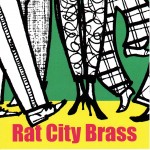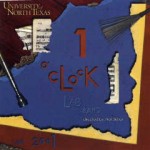Incorrect Upstream Trombone Embouchures
In teaching trombone lessons, sectionals, and classes over the past decade or so, I have noticed a recurring issue often left unaddressed by many instrumental instructors and teachers: An Incorrect Upstream Embouchure
Technically speaking, an upstream embouchure is simply the direction of air by the player upward (as opposed to down) into the mouthpiece. However, this embouchure has an inherent set of potential problems. These problems are often masked initially, but reveal themselves gradually as a student is attempting to gain a better grasp of their upper register (grades 7-9). His/her sound gets thinner and more pinched, and he/she reach a range barrier that, no matter how much they practice, they simply can’t get past.
Often, the roots of this issue lie back in the student’s beginner days (grades 5-6). A young student has a lot on their plate: attempting to reconcile a large amount of information with the feedback their bodies are giving them (both physically and musically), learning to hold a somewhat heavy, awkward instrument, figuring out how to breath and use air properly, coordinating their slide movements with the notes on the page, etc… The neglect of simple mouthpiece placement can lead to a non-functional or incorrect upstream embouchure. Traditional thought on mouthpiece placement is 2/3 upper lip, 1/3 lower lip. That is an over-simplification (consider Donald Reinhardt’s codification of embouchures), but still a good place to start. If a student allows the mouthpiece to slip to a 1/3 upper, 2/3 lower lip scenario, this give the lower lip a chance to roll out, thus directing the air upward.
That is not to say that upstream embouchures can’t work. Such examples of professional players with perfectly functional upstream embouchures include: Blair Bollinger (current bass trombonist of the Philadelphia Orchestra), Kai Winding (jazz and commercial trombonist), Rob McConnell (jazz trombonist) and Dick Nash (jazz and commercial trombonist). However, there are currently no tenor trombonists in any major symphony orchestra who play with an upstream embouchure. Trombonist and brass pedagogue, Doug Elliot, estimates that between 8-10% of all trombonists are and/or should be upstream players. From my own observations, I believe his estimation is accurate. I have had very few successful students with upstream embouchures (‘Successful’ defined as the student is able to do everything they wish on their instrument with adequate practice time and proper tutelage).
David Wilken has written extensively on this subject, and advocates that a student’s facial anatomical make up determine their mouthpiece placement and embouchure, and for the most part I agree with him. However, there is very little written on this subject as applied to starting beginner level students on the trombone. How does an instrumental music teacher, presumably with many other various beginning instrumentalists to keep an eye on, identify and correct, an upstream embouchure that has incorrectly crept into a burgeoning trombonist’s playing? Here are a few identifiers to watch for:
Identification
1. Mouthpiece placement: if it looks too low, then the student is probably playing with an upstream embouchure.
2. Instrument angle: If the student regularly plays with their instrument at or above parallel to the ground, this can either lead to or indicate a lower mouthpiece placement.
3. A pinched, thin sound, especially in the upper register: If initial attempts to open the student’s aperture and oral cavity have no effect (or make the problem worse), then it could be the result of an upstream embouchure.
Correction
1. Start back at square one with proper embouchure and mouthpiece placement. Begin by buzzing and playing simple exercises in a comfortable range to build the musculature around this new embouchure. Slowly work into the upper register utilizing this alternation between buzzing and playing. Lip slurs are excellent exercises to use in this process. Depending on the amount of practicing a student chooses to do, this process may take anywhere from a few weeks to a few months.
2. Don’t make a huge production out of the issue. Simply work with them and suggest they make a ‘few tiny adjustments’.
3. Don’t act like these tiny adjustments are the ‘magic bullet.’ These alterations require time to take hold and refine.
4. If you are not sure of the problem, or think you have identified the problem but are uncomfortable with addressing it yourself, have the student work with an experienced trombone instructor in weekly lessons.
Prevention
There are also a few preventative measures teachers can take in order to reduce the likelihood that a student may develop an incorrect upstream embouchure.
1. When starting beginning trombonists, have them say the word ‘too’ and hold that position with their lips. Them have the students direct their air stream down by tucking in their lower lip a bit. Then have them direct the air the same way into the mouthpiece. Then add the action of actually buzzing into the mouthpiece.
2. Make sure to give young trombonists enough room to have a good horn angle and posture. If the distance between their chair and the row of chairs in front of them is too little, then they may adopt an above parallel horn angle (or they will simply play into the floor, which causes a whole new set of different problems). If there isn’t enough room for their slides to easily reach 6th position, then they need more space.
3. Encourage students to practice while facing a mirror. The visual this provides can be extremely illuminating, especially for visual learners, and gives all students instant feedback on what they are doing vs. what they should be doing.
4. Incorrect instrument position, posture, and movement in marching band can lead to compromised fundamentals and embouchure in more experienced players as well. Students who attempt to watch the ground to see where they are moving have a tendency tilt their head down, placing more pressure on their upper lip and allowing their lower lip to roll out, thus potentially leading to an incorrect upstream embouchure. Proper teaching and reinforcement of instrument and body carriage can eliminate this pitfall.
These suggestions are by no means exhaustive, but they are a few things to keep an eye out for in primarily younger students in order to truly set them up for success. While there are exceptions to this line of reasoning (see the aforementioned successful upstream embouchure players), but the vast majority of players (over 90% in my estimation) should be playing with some form of downstream embouchure. It is for this reason that I advocate starting all beginning trombonists as downstream players. For further reading on this subject, see David Wilken’s introduction to Donald Reinhardt’s Pivot System.







Hey, thanks for the plug!
A couple of thoughts:
“If the student regularly plays with their instrument at or above parallel to the ground, this can either lead to or indicate a lower mouthpiece placement.”
There are many downstream players with a parallel horn angle. More, in fact, than upstream players. Horn angle has nothing to do with air stream direction, it’s all in the mouthpiece placement.
“However, there are currently no tenor trombonists in any major symphony orchestra who play with an upstream embouchure.”
I don’t know how accurate this is. There are certainly plenty of orchestral tenor trombonists with upstream embouchures (I have one and I do play orchestral and jazz), but without good video/photos of lots of orchestral trombonists it’s hard to find any upstream brass players. Jazz players get photographed and filmed up close a lot more than orchestral brass players, so it’s easier to spot the different embouchure types with them.
“However, this embouchure has an inherent set of potential problems.”
I wouldn’t go this far. I prefer to point out that this embouchure has its own idiosyncrasies that many (downstream) teachers aren’t familiar with and they inadvertently teach them to play in a way that goes against the upstream player’s natural tendencies. I think if you look around at more brass players you’ll spot more upstream players than you realize. These players can have some of the strongest chops you’ll come across – when they get their embouchure working with their anatomy. It’s worth investigating a little more, for the curious.
Thanks again for the links! I need to poke around more here and read more. Good stuff!
Dave
The bass trombonist of the Philadelphia Orchestra is an upstream player, Mr. Bollinger.
I am a trombonist in the us army band. I have struggled my whole playing career with the high register, i think it is because of an upstream embouchure (I am mainly a bass trombonist who studied with Rusty McKinney, another uptreamer). You might know him, he’s from Greensboro, NC. I never took real lessons till college, I came from really humble means and parents could never afford lessons. But I do agree with you that more research and study needs to happen to address this issue, it is simply frustrating to keep up in the game with this embouchure.